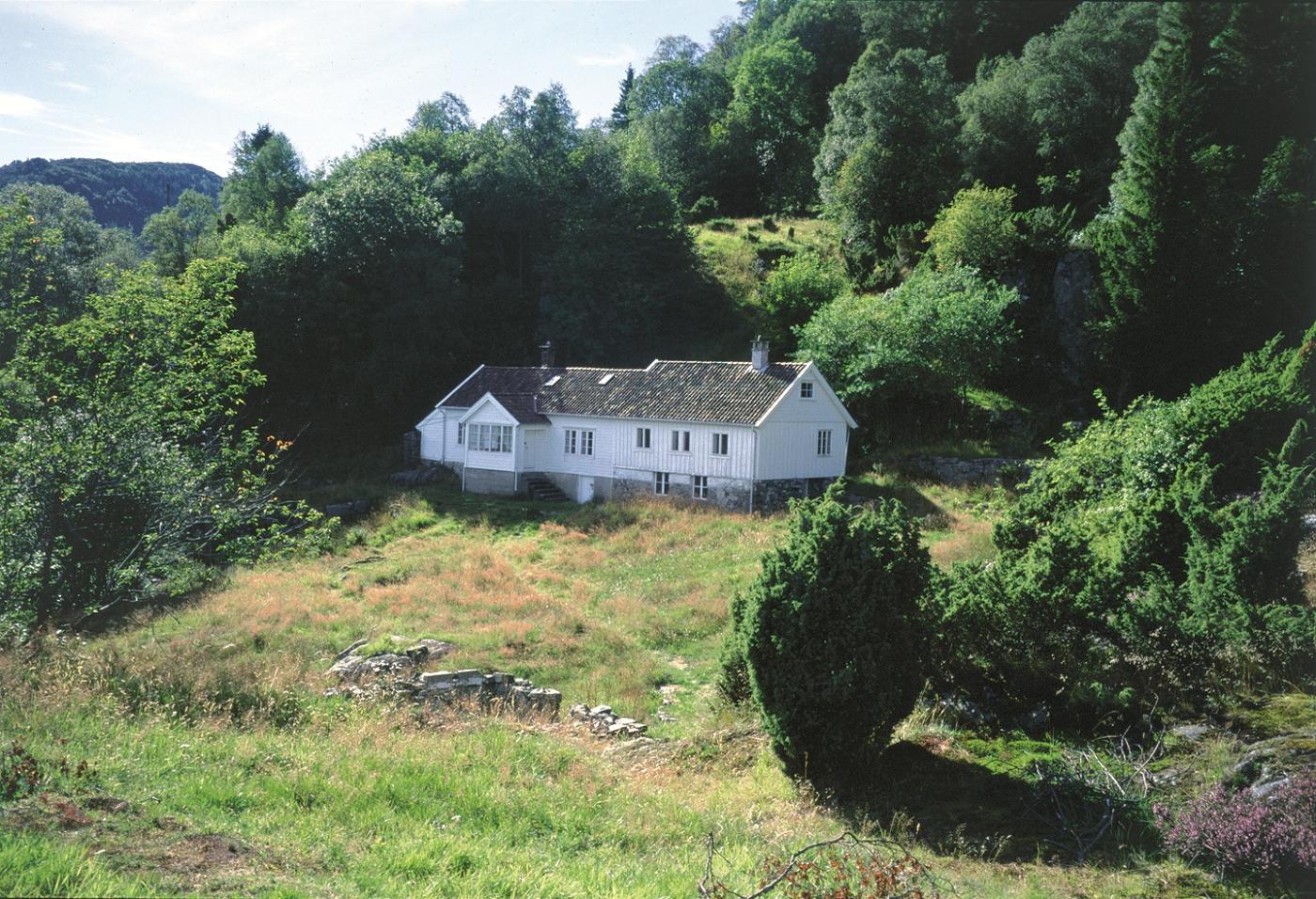From ancient times Håøy belonged to the King’s estates; leased in 1590 by a settler under the title to the farm of Flatøy. The farm buildings standing there today are from the 19th century. Towards the end of the 19th century the Håøy defence facilities were built, while Norway was still in union with Sweden. Thus the structure was a part of the defence of the city and belonged to Bergen’s outer fortifications. The mine department which could detonate the mines which were laid in the sound, was situated in the Håøy Sound. On Håøy Summit there was an artillery division, with cannon positions, floodlighting facilities and a signalling station. We still see many remains of these, and there is a road all the way to the tiop. Here at the beacon, there is an extensive view northwards up the shipping lane which shows to the full the strategic value that the defence facilities have had over a period of 1,000 years.
Today, Håøyna is a fine area for enjoying the outdoors. The oldest part of the commanding officer's home (left half) is thought to have been build before 1900 (Svein Nord).
Håøy
Håøy lies centrally in one of the main shipping lanes going into Bergen --- with Håyøsund on the south side facing Meland, and Hagelsundet facing Lindåslandet. Names like Nordfarskista and Nordfarsskorane explain things. The strategic position was important in Viking times and it has been important in our days too. The beacon on Håøy can have been built in the establishment of the coastal administration in Håkon the Good’s time, about 950 AD. The defence structure of which we say remains on Håøy Summit held a critical position during Norwegian neutrality during the First World War. The defence structure was taken down in 1957.
Om striden mellom heklungane og birkebeinane og åtaket på Magnus Erlingsson, som sat i Bergen i 1183, fortel Sverresoga:
«Alle valde å fare til Bergen. Da sende kongen nokre sjekter inn i Ulvesund, og sjølv siglde han utanskjers. Inni Ulvesund tok birkebeinane to skuter frå heklungane og drap dei fleste, men gav nokre mann nåde, så dei kunne frette tidender av dei. Dei fortalde at det låg tre skuter på speiding i Langøysundet, og det var ein vete sør på Håøya og ein på Askøy; frå den såg ein inn til byen. Dei foralde òg at heile hæren sov oppi byen, og i kva for gardar storfolket sov; skipa deira låg fullt tjelda utfor bryggjene. Med desse meldingane kom dei no til kong Sverre.
Kongen sende folk i førevegen med dei skutene som heklungane hadde ått, og desse skutene fòr da først sørpå. Da dei kom siglande nordfrå Drevøy, drog heklungane kjensel både på skutene og på skjolda, og tenkte det var deira folk. Men straks skutene kom inn på dei, tok birkebeinane til å skyte; heklungane sprang på land, somme vart drepne. Birkebeinane tok no skutene og alt som var på dei, og bia der på kongen. Etterpå heldt dei leia søretter. Kongen sende på nytt dei skutene føre som heklungane hadde ått, og bad dei ta veten på Håøya. Men birkebeinane var veidehuga, og rodde fortare etter enn kongen ville, så vetekaren gådde dei og sette eld på veten. Så rodde dei sør innunder land; for det bar skugge av fjella ut på sjøen.»

